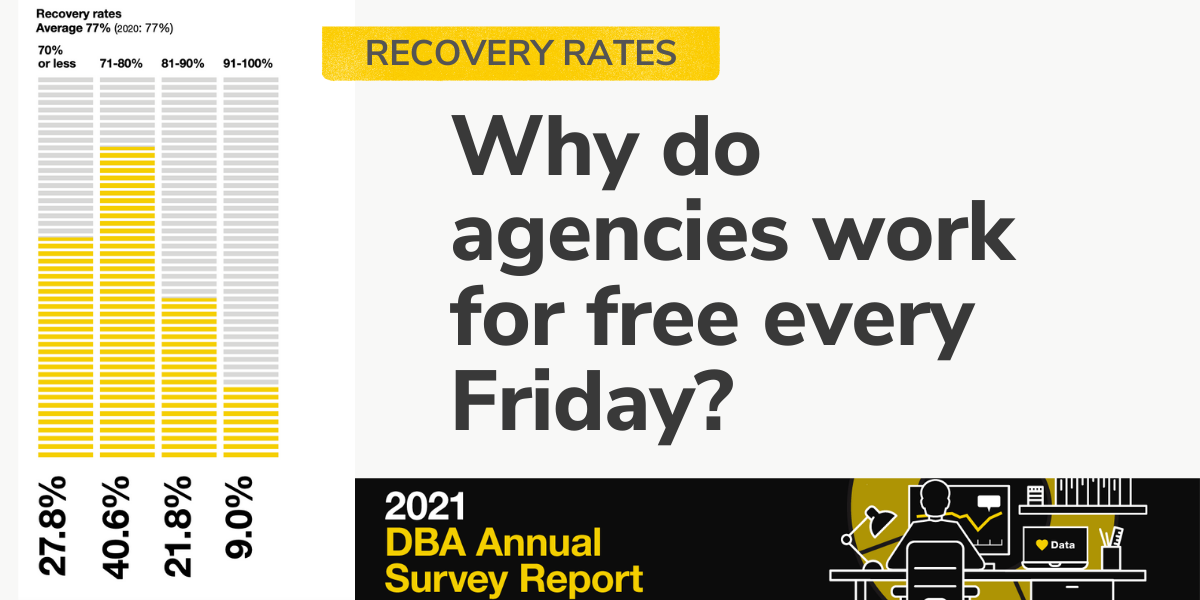

This year, Paprika is again proudly sponsoring the Design Business Association (DBA) Annual Survey Report.
Made up of more than 150 businesses, the Report is an invaluable business tool that enables DBA members to benchmark their financial performance with their peers. It analyses essential topics such as fees, salaries, income, trends, utilisation, and recovery rates.
The majority of creative agencies are working for free one day a week
Perhaps the most interesting statistic to come out of the survey this year is a figure that has remained consistent throughout the years while so much else has changed:
The recovery rate of time spent on client work has remained static for several years – 77% this year (77% in 2020, 78% in 2019).
This means that one-fifth of employees’ time is not being billed to a client.
Adam Fennelow, Head of Services at DBA says: “Improving recovery rates is one of the main things I recommend agencies to concentrate on as they grow. Any improvements made add directly to your bottom line, so you see the impact immediately. There are many reasons for a low recovery rate, but to understand how you can improve you need to have reliable numbers.”
Understanding your agency's recovery rate
"As the Report so succinctly puts it, everyone is working for clients on Fridays for nothing. Every Friday for the last three years (and probably for much longer).
Not charging for over 20% of the time spent on client work is so prevalent that it seems to have become the norm, but what is the root cause of the malaise?
Maybe charge-out rates are set at levels that are more aspirational than realistic in the market? Or perhaps estimating the time required on jobs is too optimistic, or maybe the estimate is reasonable, but the delivery is just too inefficient in terms of the time burned?
The lack of visibility makes it difficult to understand what needs to be corrected.
One way to improve your recovery rate (and therefore your profitability) is to use better time-tracking software to provide feedback into the process. Recovery rates should be considered in conjunction with utilisation rates. Analysing how resources use their time and managing staff capacity wisely help agencies to gain visibility into teams’ workloads.
Combining this with powerful job costing and reporting tools allows you to monitor budget and time utilisation, which in turn allows you to better estimate billable vs non-billable hours and to compare performance vs original plan.
Having a joined-up system producing relevant data and insights allows you to make informed decisions to move to a position where you are no longer working for free on a Friday." Nick Tomlinson, Managing Director at Paprika Software
Top 3 tips:
.